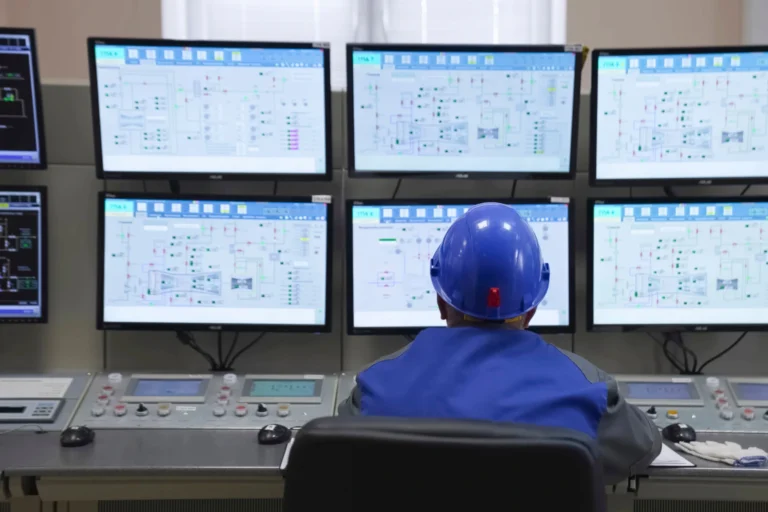How to Conduct an Effective Root Cause Failure Analysis
- Home
- News & Event
- Root Cause Failure Analysis
How to Conduct an Effective Root Cause Failure Analysis
- Esmi
- 24 Oct 2025
- News & Event

Failures can occur without warning in every industry, from engineering and production to facilities maintenance. Production slows down, systems malfunction and machines break down. Temporary fixes can restore operations, but the real challenge is ensuring the issue doesn’t recur. This is where Root Cause Failure Analysis (RCFA) proves invaluable. It’s a methodical process intended to pinpoint the true cause of an issue and guarantee that remedial measures are successful and long-lasting.
1. Recognize the RCFA’s Objective
Finding the cause of a problem and putting precautions in place to stop it from happening again are the goals of RCFA which goes beyond simple troubleshooting. To make sure that advancements are long-lasting, it supports fact-based research rather than hypotheses. When applied correctly, RCFA benefits organizations by:
- Lower maintenance expenses and downtime
- Increase the reliability of the tools
- Boost quality assurance and safety
- Establish a culture of ongoing development
2. Clearly State the Issue
In RCFA, accurately describing the problem is the first and most important stage. Rather than simply stating that “the pump stopped working,” provide a detailed account of what happened.
- When did it occur?
- What were the conditions of operation?
- Who took part?
Compile necessary data, process records, and observations. According to OTC’s RCFA training approach, this step aids in defining the issue’s boundaries clearly, preventing misunderstandings and unnecessary information later on.
3. Gather and Confirm Information
Accurate data is needed for a successful analysis. Gather both quantitative and qualitative information, such as:
- Maintenance logs
- Equipment history
- Environmental conditions
- Witness statements and operator reports
OTC places a high value on data verification training to guarantee accuracy because inaccurate or partial data frequently results in wrong conclusions.
4. Determine Potential Causes
After the data is prepared, enumerate every potential reason why the failure occurred. During this stage of brainstorming, you can employ structured tools like:
- 5 Whys: asking “why” over and over in order to go deeper into reasons
- The Fishbone (Ishikawa) Diagram, which groups possible causes according to factors like people, processes, machines, materials and environments
Analyzing problems according to their impact or frequency is known as Pareto Analysis. It’s important to take into account every possible perspective before focusing on the most plausible reasons.
5. Examine and identify the main reason
Here’s where more in-depth research starts. Check each potential reason against the information gathered.
- Is this cause sufficient to explain the failure?
- Is it supported by evidence?
- What series of circumstances resulted in it?
Instead of settling for superficial explanations, you can verify the actual root cause by using RCFA methods like 3-Leg Why-Why Analysis, Affinity Diagrams and Failure Mode and Effects Analysis (FMEA), all of which are covered in OTC’s RCFA program.
6. Create CAPAs or Corrective and Preventive Actions
Create corrective measures to address the issue and preventive measures to ensure that it doesn’t recur when the root cause has been determined. For example,
- Corrective: Fixing or swapping out a malfunctioning part
- Preventive: Putting in place routine checks or design enhancements
In order to guarantee that the solution is workable and durable, OTC’s course outline states that cooperation between the maintenance, operations and quality teams is necessary for effective CAPA.
7. Put into Practice and Track Effectiveness
After carrying out the action plan, keep an eye on the outcomes. Monitor performance information, check equipment, and determine whether the issue has happened again. Review the analysis if the problem recurs; there might be other root causes that were overlooked. Your dependability plan is strengthened and your approach is improved with ongoing monitoring and assessment.
8. Record the Results and Share Them
Although it is frequently disregarded, documentation is essential in RCFA. Maintain thorough records of:
- The definition of the problem
- Information and proof gathered
- Analytical instruments
- Root causes were identified
- Preventive and remedial measures implemented
By sharing the results with the appropriate departments, organizational learning is ensured, assisting others in avoiding future errors of a similar nature.
The Significance of Training
Effective RCFA demands not only technical expertise but also collaboration and analytical abilities. OTC Training Centre Malaysia’s Root Cause Failure Analysis (RCFA) course offers practical instruction in using instruments like:
- Five Reasons
- Pareto Analysis
- Diagram of the Fishbone
- FMEA
- SCAMPER Technique
Concluding remarks
The aim of root cause failure analysis is to create systems that don’t break in the first place, not only fix what’s broken. Your company can
transition from reactive maintenance to proactive improvement by learning and successfully implementing the RCFA process. If you’re prepared to improve your team’s ability to solve problems, check out the entire program here:
This two-day hands-on course (9:00 AM to 5:00 PM) is perfect for engineers, managers and operations staff who want to improve their problem-solving abilities and reduce the number of failures that occur.
📞 Ready to get started?
Contact OTC Training Centre Sdn Bhd today to explore how our HRD Corp claimable training programs can support your business growth and workforce development goals.
💬 Let’s Connect!
📍 Visit us: www.otc.com.my
📧 Email: info@otc.com.my
📞 Call: 012-588 2263
📱 Follow us on Facebook | LinkedIn | Instagram | WhatsApp Channel
Recent ----------
- Tags
Related Post










THANKYOU FOR YOUR ENQUIRY
Lorem ipsum dolor sit amet, consectetur adipiscing elit. Ut elit tellus, luctus nec ullamcorper mattis, pulvinar dapibus leo.
